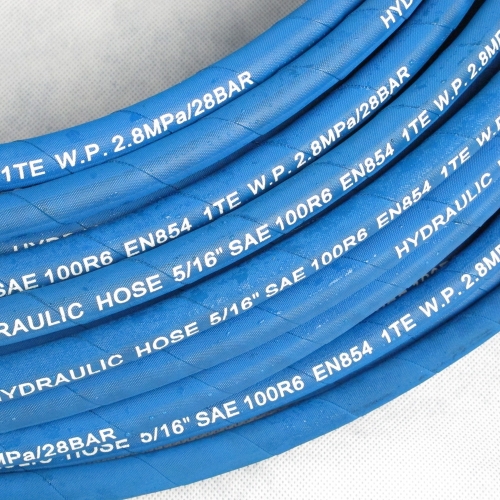12 月 . 04, 2024 16:25 Back to list
China Hydraulic Hose Pipe Manufacturing and Supply Solutions for Various Industries
Understanding China’s Hydraulic Hose Pipe Industry
Hydraulic hose pipes play a pivotal role in a variety of industrial applications, serving as critical components in machines that rely on hydraulic systems. In recent years, China has emerged as a global leader in the manufacturing and supply of hydraulic hose pipes. This rise is not merely a consequence of low labor costs; it encompasses a complex interplay of advanced manufacturing techniques, robust supply chains, and an expansive domestic market that collectively fuels the growth of this industry.
The Structure of the Industry
China’s hydraulic hose pipe industry is characterized by a mix of established manufacturers and a growing number of startups. Leading companies are often vertically integrated, controlling everything from raw material sourcing to final product assembly. This integration affords manufacturers better quality control, reduces lead times, and optimizes production costs.
Furthermore, the market is supported by a comprehensive supply chain network that includes numerous suppliers of rubber, steel, and other materials essential for hydraulic hose production. The ability to source high-quality materials locally enhances competitiveness and supports quicker turnaround times, meeting the demands of both domestic and international clients.
Technological Advancements
Advancements in manufacturing technology have also significantly impacted the hydraulic hose pipe industry. Chinese manufacturers are increasingly adopting automation and high-precision machinery, which improves production efficiency and product quality. The use of computer-aided design (CAD) and computer-aided manufacturing (CAM) technologies enables firms to produce hoses that meet increasingly stringent international standards for safety and reliability.
In addition, research and development (R&D) efforts have led to innovations in the materials used for hydraulic hoses. Modern hoses are now designed to withstand higher pressures and extreme temperatures, catering to a wider range of applications—from construction machinery to aerospace technologies. The focus on developing resilient, lightweight materials reflects a global trend toward increasing efficiency and reducing environmental impact.
The Global Market
china hydraulic hose pipe

As a major player in the global hydraulic hose pipe market, China exports a significant portion of its production to countries across the globe. This has been facilitated by the country’s participation in international trade agreements and its strategic investments in transportation infrastructure, such as ports and highways, which streamline the logistics of exporting goods.
China’s competitive pricing has also made it an attractive source for companies looking to procure hydraulic hoses. However, the country’s manufacturers are not solely relying on price competitiveness; they are increasingly focused on enhancing quality to meet the expectations of discerning international clients. This shift is helping to elevate China’s reputation from a low-cost manufacturing hub to a supplier of high-quality products.
Challenges Facing the Industry
Despite its rapid growth, China’s hydraulic hose pipe industry faces several challenges. Rising labor costs, stricter environmental regulations, and intense competition from both domestic and international players are hurdles that manufacturers must navigate. Additionally, as global markets evolve, companies are being forced to innovate continually and adapt to new trends, such as the growing emphasis on sustainable production practices and the use of eco-friendly materials.
Moreover, geopolitical tensions and trade uncertainties can impact export markets, creating volatility that makes strategic planning more difficult. It is essential for manufacturers to diversify their markets and develop contingency plans to mitigate risks associated with global supply chain disruptions.
The Future of the Industry
Looking ahead, the future of China’s hydraulic hose pipe industry appears promising, underpinned by significant investments in technology and infrastructure. As industries worldwide place greater emphasis on automation and smart technologies, hydraulic hose pipes will continue to evolve. The increased adoption of electric and hybrid systems may also pave the way for new types of hydraulic products that align with global sustainability goals.
In conclusion, China's hydraulic hose pipe industry stands at the intersection of tradition and innovation. With a solid foundation built on robust manufacturing practices, a dynamic supply chain, and a strong focus on quality, China is well-positioned to consolidate its leadership in the hydraulic hose market. As manufacturers navigate the challenges ahead and embrace the opportunities presented by technological advances, the industry is set to thrive in the coming years, contributing significantly to global industrial growth.
-
EN857 2SC Hydraulic Hose Suppliers OEM & China Manufacturers
NewsMay.30,2025
-
51mm Hydraulic Hose Manufacturer China OEM Durable & Custom Solutions
NewsMay.30,2025
-
OEM Rubber Air Hose Supplier Durable Custom Solutions
NewsMay.29,2025
-
High-Pressure Wrapped Cover Steel Wire Spiral Hydraulic Hose Supplier
NewsMay.29,2025
-
Rubber water suction and discharge hose
NewsMar.07,2025
-
SAE 100 R6/EN 854 R6 Fibre Braided Oil Hose
NewsMar.07,2025



